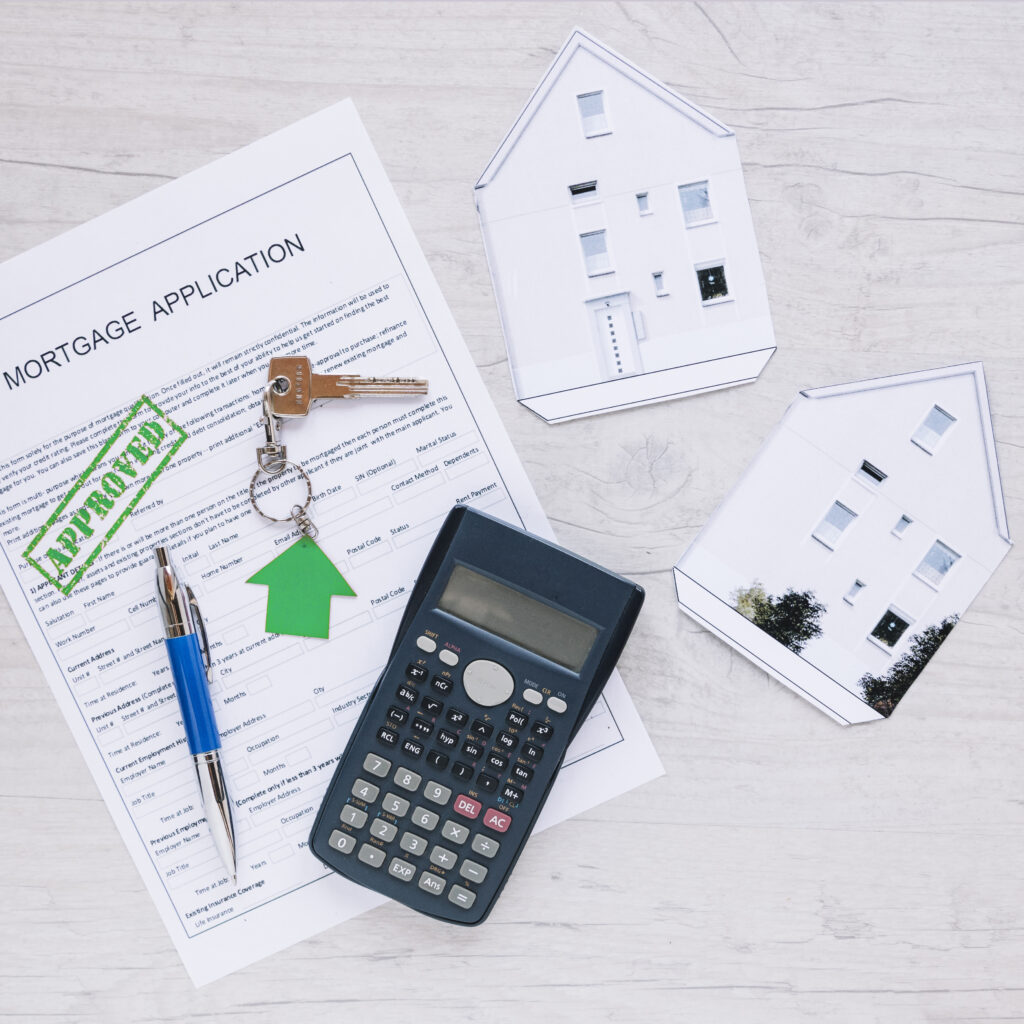The terms “mortgage” and “loan” are frequently used synonymously in financial jargon. They are not precisely the same, despite their commonalities. Making better financial decisions can be aided by knowing the differences between the two, particularly when making large purchases like buying a property. We shall examine the definitions, types, and applications of mortgages and loans as we delve into their subtleties in this essay.
Understanding Loans
Any financial transaction in which one party loans money to another with the intention of return over time—typically with interest—is referred to as a loan. Depending on whether they are supported by collateral, loans can be classified as secured or unsecured. They can be used for many things, including as beginning a business, financing schooling, or purchasing a car.
Usually, applying for a loan requires the borrower to submit an application with details about their financial status. To evaluate the borrower’s creditworthiness, the lender considers this data. The borrower agrees to repay the loan amount, known as the principal, over a predetermined period of time, plus interest, assuming it is granted. The loan’s conditions, such as its interest rate and repayment plan,
Types of Loans
There are numerous types of loans, each intended to fulfill a certain purpose. For instance, personal loans are unsecured loans that can be used for a range of individual needs. Auto loans are secured loans designed especially for car purchases, where the collateral is the vehicle itself. Student loans are intended to pay for school costs, and they frequently have advantageous features including lower interest rates and alternatives for deferred repayment.
Funding for launching or growing a firm is made available by business loans. These can be either secured or unsecured, according on the borrower’s credit profile and the lender’s needs. Payday loans are high-interest, short-term loans used to meet urgent needs until the borrower’s next payment. Even though they can give you instant access to money, they frequently have exorbitant fees and interest rates, therefore

What is a Mortgage?
Real estate purchases are made possible by a particular kind of borrowing called a mortgage. A mortgage is backed by the real estate being bought, unlike other loans. In the event that the borrower defaults on the loan, the lender will be entitled to foreclose on the property and sell it to recoup the unpaid balance. Long-term loans, usually lasting between 15 and 30 years, are what mortgages are known for.
A mortgage application procedure consists of multiple steps. The lender will evaluate the borrower’s financial status and establish the maximum amount that can be borrowed when they apply for pre-approval. When the borrower receives preapproval, they can begin searching for a home that is within their means. The borrower files a formal mortgage application once they have located a suitable piece of property. The banker
Types of Mortgages
Mortgages come in several varieties, each with unique characteristics and advantages. Monthly payments for fixed-rate mortgages are predictable because the interest rate is the same for the duration of the loan. An interest rate on an adjustable-rate mortgage (ARM) may fluctuate over time, typically in line with an index. This implies that over time, the monthly payments may change.
First-time homeowners and individuals with poorer credit scores are intended beneficiaries of FHA loans, which are government-backed mortgages. Their credit standards are more relaxed, and they demand a smaller down payment. VA loans, which offer advantageous terms including no down payment and reduced interest rates, are accessible to veterans and active-duty military personnel. Properties that beyond the conforming loan restrictions established by Freddie Mac and Fannie Mae are eligible for jumbo loans.
Key Differences Between Loans and Mortgages
Not every loan is a mortgage, even if mortgages are loans. The main distinction is in the loan’s security and goal. Real estate purchases are the exclusive use of mortgages, which are backed by the actual property. Due to the degree of protection this security offers lenders, they are able to provide interest rates that are lower than those of unsecured loans.
Another major distinction is the duration of the loan term. Typically, mortgages are long-term loans with 15–30 year payback terms. Shorter durations, ranging from a few months to many years, are customary for other loan kinds like personal or auto loans. A mortgage’s longer duration enables lower monthly payments, which lowers the cost of buying a home for borrowers.
The Role of Interest Rates
Interest rates are an important factor in mortgages and loans. They serve as a representation of the cost of borrowing money and have a big influence on the total amount paid back over the loan’s term. Interest rates on mortgages can be either fixed or flexible. Although adjustable-rate mortgages might offer lower beginning rates but carry a higher risk of variable payments, fixed-rate mortgages offer stability with regular monthly payments.
Depending on the borrower’s creditworthiness and the nature of the loan, interest rates for various kinds of loans can differ significantly. Since they present a bigger risk to lenders, unsecured loans—like personal loans—generally have higher interest rates than secured loans. Because the collateral lessens the lender’s risk, secured loans—like auto loans—typically have lower interest rates.

Repayment Terms and Conditions
Mortgages and loans might have very different terms and circumstances regarding repayment. Repayment terms for mortgages are often lengthy and consist of fixed monthly installments that include principal as well as interest. Along with the monthly payment, some mortgages also include property taxes and insurance, which are kept by the lender in an escrow account.
Different payback schedules may apply to other loan kinds. For instance, fixed monthly payments over a shorter period are common for personal loans. Although the period of an auto loan is normally shorter than that of a mortgage, auto loans typically also feature set payments. Short-term in nature, payday loans must be repaid in full on the borrower’s subsequent payday.
The Impact of Credit Scores
Having a good credit score is essential for getting loans and mortgages. Lenders use them to determine the risk of making a loan since they serve as a representation of the borrower’s creditworthiness. Better loan arrangements, such lower interest rates and larger loan amounts, may be available to borrowers with higher credit scores since they reflect a lower risk.
A high credit score is necessary to get the best rates and terms on a mortgage. A minimum credit score is usually required by lenders, and people with higher scores could qualify for cheaper interest rates and less of a down payment. Credit scores are important for other kinds of loans as well, though the requirements could change based on the lender and the loan kind.
The Importance of Down Payments
While down payments are frequently needed for mortgages, they are not as frequently needed for other kinds of loans. A down payment is a portion of the buyer’s initial payment toward the property. It lowers the loan balance and offers some security to the lender. The mortgage’s terms and interest rate may change depending on the amount of the down payment. Better terms and reduced loan rates are frequently the outcome of larger down payments.
Generally, down payments are not necessary for other kinds of loans. To lower the lender’s risk, some secured loans—like vehicle loans—might, however, call for a down payment. Depending on the borrower’s creditworthiness and the lender, the down payment amount may change.
The Role of Collateral
An asset known as collateral lowers the risk to the lender and secures a loan. The property being bought acts as security for mortgages. The lender may foreclose on the property and sell it to recoup the unpaid balance if the borrower defaults on the loan. Lenders are able to provide more attractive conditions and cheaper interest rates because of this security.
Collateral may also be used as security for other kinds of loans. For instance, auto loans are backed by the vehicle being bought. Depending on the requirements of the lender, personal loans may be secured or unsecured. Because the collateral lessens the lender’s risk, secured loans often offer lower interest rates.
The Process of Foreclosure
The legal process of foreclosure is what happens when a borrower is unable to make mortgage payments. To recoup the unpaid debt, the lender seizes control of the property and sells it. The borrower may suffer serious repercussions from foreclosure, such as losing their house and having a major decline in their credit score.
Although it differs from state to state, the foreclosure procedure usually entails multiple steps. The lender must first provide the borrower notice of the default and a chance to correct it. Should the debtor neglect to comply, the lender has the authority to start the foreclosure process. The loan is subsequently repaid using the money raised from the property’s sale at a public auction. The borrower bears liable for any outstanding balance.
Conclusion
In conclusion, a mortgage is a form of loan, but it differs from other types of loans due to certain features. Real estate purchases are made with mortgages, which are backed by the asset being purchased. They usually require a lengthy application process and have lengthy repayment terms. You may choose the finest loan choice for your needs and make educated financial decisions by being aware of the distinctions between mortgages and other loan kinds. Understanding the intricacies of loans and mortgages will enable you to confidently traverse the financial landscape, regardless of whether you are purchasing a home, a car, or financing a personal need.


